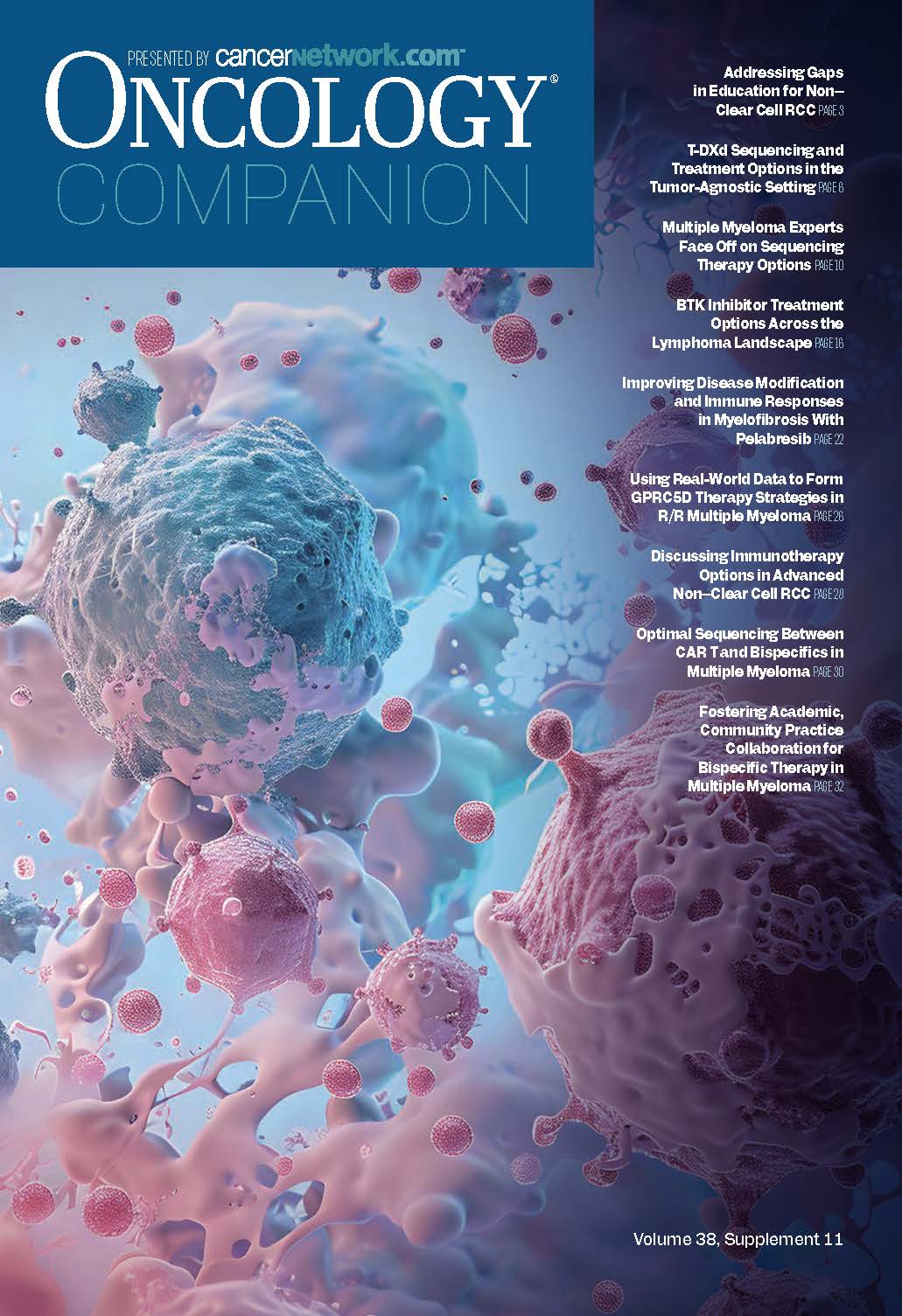Fostering Academic, Community Practice Collaboration for Bispecific Therapy in Multiple Myeloma
Experts in multiple myeloma spoke about optimal treatment strategies for patients who receive bispecific therapy, focusing specifically on facilitating a multifaceted approach between academic and community practices.
Meet the experts

In a recent Training Academy segment hosted by CancerNetwork, a panel of experts in multiple myeloma spoke about optimal treatment strategies for patients with multiple myeloma who receive bispecific therapy, focusing specifically on facilitating a multifaceted approach between academic and community practices. The group discussed implementing standardized treatment protocols, aiding communication between institutions, and employing novel technologies to address other needs across all stages of managing multiple myeloma. Here are their key takeaways.
Academic and Community Physician Collaboration
- Systematically establishing communication between academic and community physicians is key.
- Although it may not be feasible for all practices, administering step-up dosing in a community setting may be easier for patients.
- Having a single point of contact at an academic center is important for those in a community center to complete the referral process as early as possible.
- Community outreach programs may help educate community physicians who are less experienced with using novel bispecific therapies.
- Certain barriers may prevent patients with multiple myeloma from traveling to an academic center to undergo treatment.
- It is critical to establish a patient’s trust in a community physician who refers them to an academic center.
- Educating patients on what bispecific therapy means and what adverse effects they may experience can help.
- Some patients may live hours away from an academic treatment center.
- Community and academic physicians can collaborate on addressing a patient’s travel, lodging, and caregiver needs.
- Referring patients around the time of second-line treatment may help encourage them to undergo bispecific therapy.
- It may be suitable to refer patients as early as the time of their first relapse.
- It is critical to establish a patient’s trust in a community physician who refers them to an academic center.
Interinstitutional Communication Following Bispecific Therapy
- Educating patients on potential long-term toxicities may help them stay on treatment for longer.
- With BCMA-targeted therapy, patients should know to call their providers if they experience a fever or other signs of infection.
- Providers should inform patients of the risk of losing their nails after treatment with talquetamab.
- Performing blood work and checking IgG levels periodically may be important to determine whether a patient is at risk of having an infection after therapy.
- Viral reactivations such as cytomegalovirus and Epstein-Barr virus are more common with BCMA-directed agents vs GPRC5D-targeting treatment.
- Academic and community physicians should work together to overcome the learning curve of monitoring potential long-term effects on the immune system after bispecific therapy.
- Academic physicians can host more conferences at their institutions or visit community physicians to share their experiences with using bispecific agents.
The Bispecific Transfer Process
- It may be too late to refer a patient with an ECOG performance status of 2 or 3 to an academic center based on logistics associated with traveling.
- After step-up dosing in an academic center, patients without active neurotoxicity and cytokine release syndrome (CRS) may be able to continue treatment in a community setting.
- Health care teams including providers, nurses, and pharmacists can collaborate to mitigate toxicities that occur in the community.
- Properly transitioning patients from academic centers to community settings may entail including a report on toxicity incidence and management.
- The report can describe CRS and neurotoxicity events that may be associated with agents that target B-cell maturation antigen (BCMA) such as teclistamab-cqyv (Tecvayli) and elranatamab-bcmm (Elrexfio).
- The report can include details on the use of antiviral, intravenous immunoglobulin, or Pneumocystis jirovecii pneumonia prophylaxis.
- Reports can convey nail changes, skin peeling, and dysgeusia associated with GPRC5D-targeting agents such as talquetamab-tgvs (Talvey).
- Holding treatment or decreasing dosing with talquetamab may help mitigate these toxicities.

Newsletter
Stay up to date on recent advances in the multidisciplinary approach to cancer.